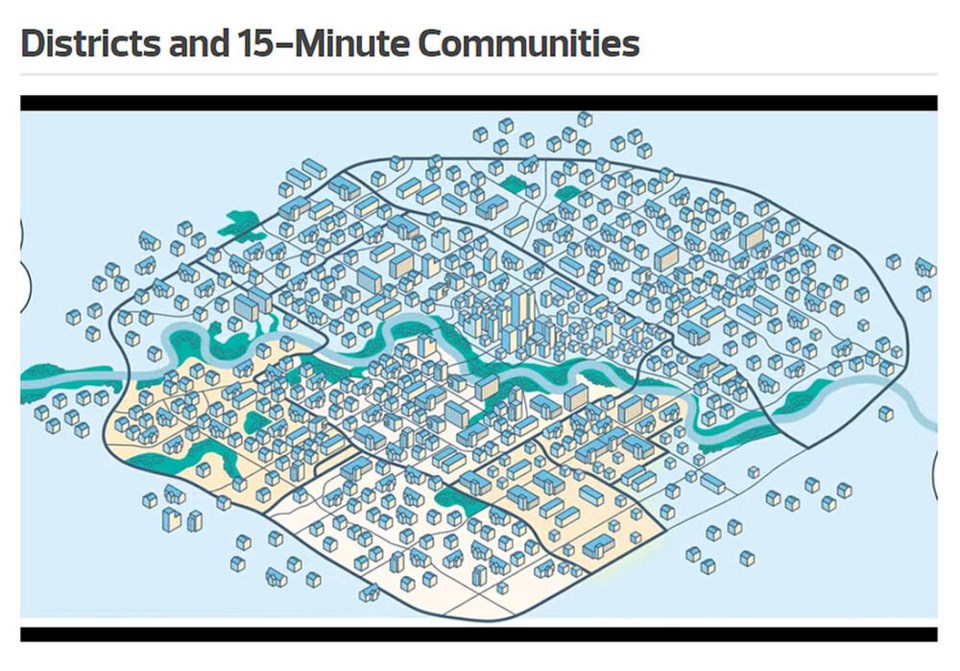The City of Delta has not formally adopted a “15-minute city” plan but that doesn’t mean aspects are not already part of the city’s ongoing initiatives.
That was the staff response to a recent letter to council from a resident opposed to the idea of Delta adopting such a policy, a form of urban planning aimed at having residents being able to walk or bike to work or access groceries, healthcare, education and other services in an approximately 15-minute walk or bike ride.
While the concept has been talked about for a few years, Delta has not adopted the policy as part of its community development and planning.
However, there are many aspects in Delta’s Official Community Plan, Community Energy Emissions Plan, Cycling Master Plan, among other plans and policy documents, that support compact and complete communities along with improving cycling and walking infrastructure, the staff memo explains.
Staff are also working on an update to the energy and emissions plan which included public consultation and surveys to get the public’s views on reducing community-wide GHG emissions, staff added.
The Climate Action and Community Livability Advisory Committee in 2021 discussed the concept during its review of the city’s plan at the time to update Delta’s plan.
It was noted that the improvement of Delta’s cycling routes could help move the city toward the 15-minute concept that is popular in Europe. It was also noted that Delta’s Neighbourhood Road Improvements Plan receives ongoing funding to improve access to active transportation for cyclists and pedestrians.
A “Districts and 15-Minute Communities” concept is currently being pitched by the City of Edmonton, where further public consultations will be held this year.
A recent Research Co. and Glacier Media survey asking Canadians about the “15-minute city” found that only 33 per cent of the country’s residents say they had heard of the concept. When Canadians were asked if they support or oppose the “15-minute city,” 63 per cent were in favour, while 16 per cent were against it and 22 per cent were undecided.
- With files from Mario Canseco




